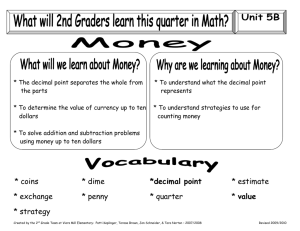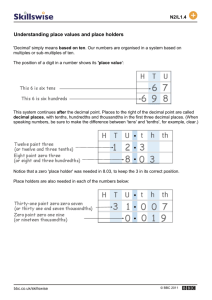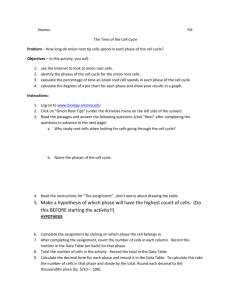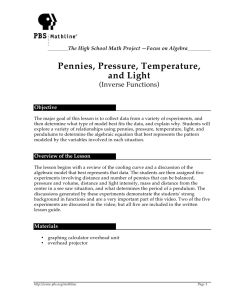Math Lesson Where is pi on the number line?
advertisement
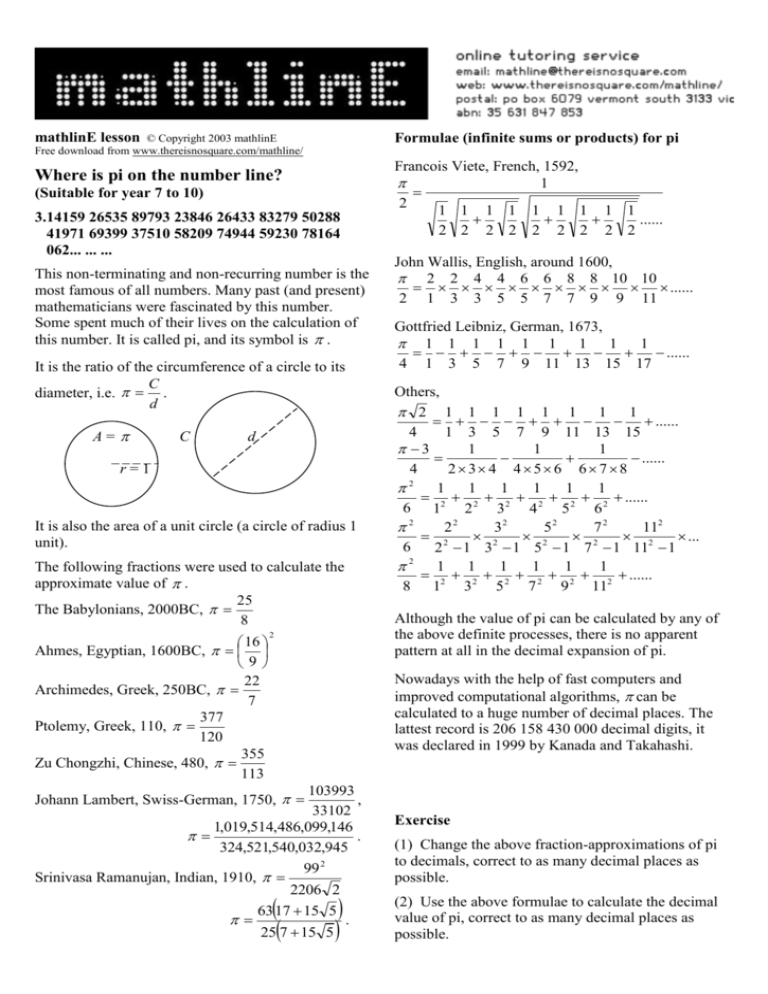
mathlinE lesson Formulae (infinite sums or products) for pi © Copyright 2003 mathlinE Free download from www.thereisnosquare.com/mathline/ Where is pi on the number line? (Suitable for year 7 to 10) 3.14159 26535 89793 23846 26433 83279 50288 41971 69399 37510 58209 74944 59230 78164 062... ... ... This non-terminating and non-recurring number is the most famous of all numbers. Many past (and present) mathematicians were fascinated by this number. Some spent much of their lives on the calculation of this number. It is called pi, and its symbol is . It is the ratio of the circumference of a circle to its C diameter, i.e. . d A= C d r=1 It is also the area of a unit circle (a circle of radius 1 unit). The following fractions were used to calculate the approximate value of . 25 The Babylonians, 2000BC, 8 16 Ahmes, Egyptian, 1600BC, 9 22 Archimedes, Greek, 250BC, 7 377 Ptolemy, Greek, 110, 120 355 Zu Chongzhi, Chinese, 480, 113 2 Francois Viete, French, 1592, 1 2 1 1 1 1 1 1 1 1 1 ...... 2 2 2 2 2 2 2 2 2 John Wallis, English, around 1600, 2 2 4 4 6 6 8 8 10 10 ...... 2 1 3 3 5 5 7 7 9 9 11 Gottfried Leibniz, German, 1673, 1 1 1 1 1 1 1 1 1 ...... 4 1 3 5 7 9 11 13 15 17 Others, 2 1 1 1 1 1 1 1 1 ...... 4 1 3 5 7 9 11 13 15 3 1 1 1 ...... 4 2 3 4 4 5 6 6 7 8 2 1 1 1 1 1 1 2 2 2 2 2 2 ...... 6 1 2 3 4 5 6 2 2 2 2 2 3 5 72 112 2 2 2 2 2 ... 6 2 1 3 1 5 1 7 1 11 1 2 1 1 1 1 1 1 2 2 2 2 2 2 ...... 8 1 3 5 7 9 11 Although the value of pi can be calculated by any of the above definite processes, there is no apparent pattern at all in the decimal expansion of pi. Nowadays with the help of fast computers and improved computational algorithms, can be calculated to a huge number of decimal places. The lattest record is 206 158 430 000 decimal digits, it was declared in 1999 by Kanada and Takahashi. 103993 , 33102 1,019,514,486,099,146 . 324,521,540,032,945 Johann Lambert, Swiss-German, 1750, Srinivasa Ramanujan, Indian, 1910, 99 2 2206 2 63 17 15 5 . 257 15 5 Exercise (1) Change the above fraction-approximations of pi to decimals, correct to as many decimal places as possible. (2) Use the above formulae to calculate the decimal value of pi, correct to as many decimal places as possible.
